

ASK YOUR DOCTOR IF THIS ARTICLE IS RIGHT FOR YOU
by guest columnist Rob Lamberts, MDI have a few personal questions I’d like to ask:
• Do you have psoriasis? Psoriatic arthritis? Rheumatoid arthritis?
• Do you have ulcerative colitis? Crohn’s disease?
• Do you have metastatic breast cancer that is estrogen receptor positive?
• Do you have “bedroom problems?” Male pattern baldness?
• Do you have type 2 diabetes and obesity?
Because if you have any of these, I’ve got the PERFECT medication for you.
Of course, you get your information from the same place I get much of mine: commercials on TV. You’ve seen the commercials: the ones with the happy and healthy looking people whose lives have been changed by the latest and greatest new drug. The commercial ends with the laundry list of warnings about what the wonder drug can do to you, like:
• Don’t take this drug if you are allergic to this drug.
• Please tell your doctor if you have any of the following symptoms:
• Severe abdominal pain
• Blood pressure elevation
• Excessive bleeding
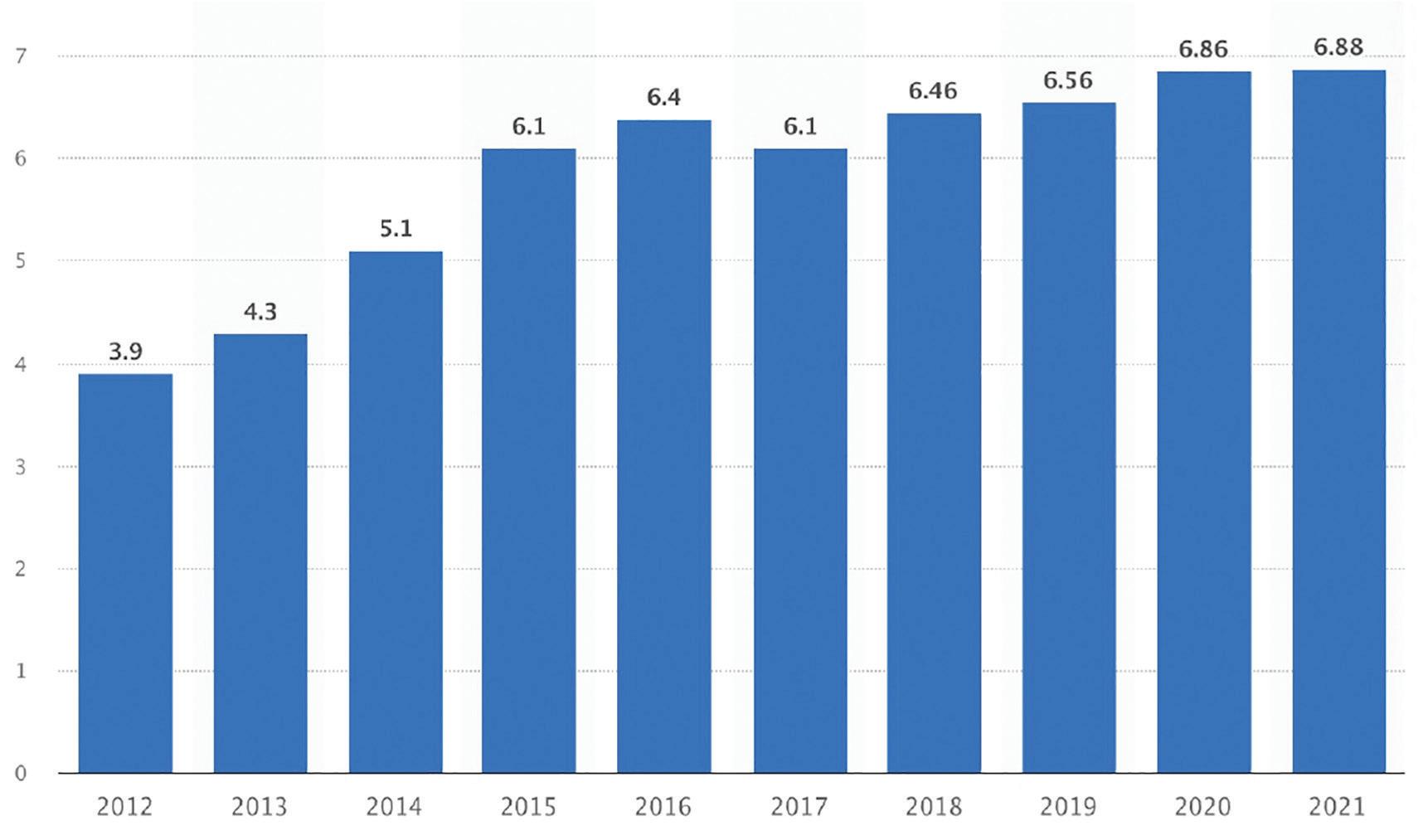
industry in the United States from 2012 to 2021 (in billion U.S. dollars)
• Erections lasting more than 5 hours
• Pregnancy resulting from prolonged erections
• Stool or urine glowing in the dark
• Head explosions
• Unusual obsessive thoughts about llamas
• Corrosive flatulence
• Death Yeah, those things build a lot of confidence don’t they?
Despite these dire warnings (which are required by the FDA in any discussion by drug companies about their products), these commercials are a staple of early evening television. The drug industry spent $6.88 billion on direct-to-consumer (DTC)advertising in 2021, and that number promises to only go up.
$6.88 Billion to tell us about drugs for conditions most of us don’t have. Seriously, just how common are these conditions? Some of them are fairly common, such as type 2 diabetes affecting 10% of the US population (and resulting in a huge cost in suffering and life lost). Psoriasis is also fairly common, affecting 3% of the


WHAT’S AVAILABLE IN HOME HEALTH CARE?
Simply put, a lot depends on the patient, but there are plenty of misconceptions about the various options available.
For instance, hospice is often viewed as the final stage of home care, only resorted to when death is imminent. As attested to by former president Jimmy Carter’s case, that isn’t always true. At press time, the 39th president has been the recipient of hospice care for weeks.
According to a study published in the Journal of Palliative Medicine (more about that option in a moment), hospice care lasts three weeks or more in about half of all cases.
In fact, Kevin Burton and Josh Williams, a couple of executive types at Davis Road’s SouthEast Hospice, say that one patient told them, “If it hadn’t been for hospice I would have died.” Yes, hospice can be a somewhat long-term proposition, even though it’s generally reserved for patients with an outlook of six months or less to live, and does not involve any curative efforts. Hospice is the option for patients who have exhausted every medical option they care to employ, but still haven’t been cured of an illness that has been deemed terminal. The goal of hospice is comfort, for both the patient and the family.

Palliative care is often thought of in the same terms. After all, the dictionary says to palliate is “to make (a disease or its symptoms) less severe or unpleasant without removing the






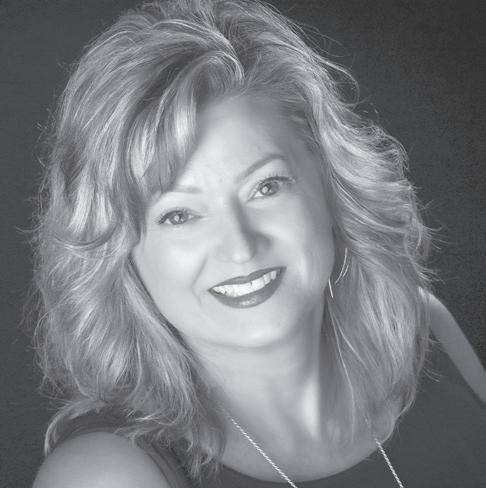

PARENTHOOD
by David W. Proefrock, PhDYour 13 year-old son’s school contacted you to check on him since he hadn’t been at school for the past two days. As far as you knew, he had been at school. At least he leaves in the morning in time to catch the bus and get home about the same time he always does. The school is considering suspending him for cutting classes, but wanted to give you a chance to find out what’s going on first. What do you do?
A. Tell the school to suspend him. That will be enough punishment.
B. He should be punished severely with loss of privileges and electronics in addition to the suspension from school.
C. This calls for a serious investigation. First, find out why he’s been cutting school and what he’s been doing all day when he is supposed to be in school. Then set a punishment consistent with what’s going on. There may be something happening that doesn’t deserve punishment at all.
D. Most kids will try this at one time or another. Restrict him for a while so he will know that you don’t approve, but don’t go overboard.
If you answered:
A. Normally, it is best to let the school set consequences for things that occur at school. However, this isn’t a normal situation. It is quite likely that something serious is going on here, and you need to find out what it is.
B. This may call for serious consequences, but not before you know what’s going on. There are many reasons a child might skip school and not all of them deserve punishment. Some deserve help.
C. This is the best course of action. You have to know what you’re dealing with before you decide on consequences.
D. Actually, most kids do not do this. It could be a sign that he is involved in things he shouldn’t be involved in, but it could also be a sign the he needs help. Investigate what going on before you do anything else.
It is always best to figure out what’s going on before you decide how to deal with it. While skipping school is always bad, the reasons for skipping are not. You may need to talk with him, with the school, and even with his friends before you get the true picture.
Dr. Proefrock is a retired local clinical and forensic child psychologist.


MEDICAL MYTHOLOGY
BOTTLED BEATS TAP
The title of this segment seems like a no-brainer, right? Bottled water is pure, tested, regulated. Tap water comes from who knows where and contains who knows what.
All of that is myth. It’s 100% backwards: the bottled water industry is largely self-regulated, and is held to much lower standards than municipal water supplies, the stuff that comes from our kitchen faucets. That water is constantly tested for purity, far more than bottled water, which as many labels honestly admit (and no wonder), comes from from “municipal water sources.” In other words, tap water. Of course, the label might show an image of a geyser, a mountain spring, or glacial ice.
Even if every single bottle of store-bought water was filled by elves at a secret spring deep in the forest and was as pure as angel tears, we are paying a huge price — in many ways.
The first way we’re being gouged is the direct cost of the water we’re buying. Have you heard that we’re all supposed to drink eight 8 oz glasses of water a day to be properly hydrated? The truth or mythology of that statement is for another article. For today’s topic, it has been calculated that to do so using tap water would cost 50¢ a year, but $1,400 a year from bottled water. A product that is practically free and is already very conveniently delivered to our homes is instead being
sold to us at something like a 1,900% mark-up. We’re paying dollars for a product we can get for pennies.
As one public health advocate observed, “Bottled water is the greatest marketing trick of all time.”
“My family’s health is well worth the extra expense, which I will gladly pay,” some might respond.
There is virtually no clinical evidence that bottled water is safer or more salubrious than tap water (unless it’s something unusual like Flint, Michigan, or water outages after an
earthquake or other natural disaster). In fact, bottled water can be significantly less healthful: chemicals from the plastic bottles can leach into the water. Factories sometimes ship out millions of bottles contaminated with bacteria or chemicals and have to issue massive recalls. The words “pure” and “safe” and “healthy” found on many labels imply that “the competition” — tap water — isn’t. That’s simply not true. What is true: either source could be contaminated, but one (tap) is rigorously and relentlessly tested, while the other (bottled) has far less oversight, and often comes from the same source anyway (again, tap).
Yet another part of the immense cost of bottled water is the bottles themselves: billions upon billions of them, a single-digit percentage of which are recycled. From their manufacture to their final resting place in the Savannah River, the ocean, in empty lots or — rarely — in landfills (where they take an estimated 700 years to disintegrate), plastic bottles are an epic environmental disaster. Save your money and save the planet. Use tap water.

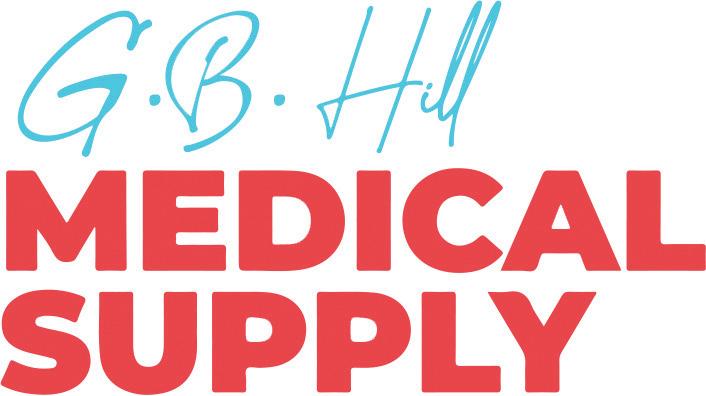

cause.” Palliative care is indeed a frequent option for end-stage medical diagnoses. But beyond the dictionary’s definition, “aggressive curative care is approved by Medicare” even in palliative care, says Burton. “It’s used in serious but not necessarily terminal situations,” adds Williams. “It’s kind of a middle ground. It’s not home health and it’s not hospice.

Speaking of home health care, that is the option of choice for non-hospital care where improvement is a realistic option. Of course, home health care may not result in improvement or a cure, and in those cases a patient’s care may be transferred to a hospital, nursing home or long-term care facility, or while still at home, to palliative or hospice care. It all depends upon the patient and the diagnosis, with input from the physician involved and the family.
As varied as the options discussed to this point are, there are several more. Respite care, as its name suggests, is designed to offer family (or family-hired) caregivers a break, a respite, to recharge, rest, or to get things done that require being away from the patient. Someone else steps in for a morning, a full day, or whatever the agreed time needed might be.
There are agencies that offer music therapy and pet therapy too, as well as support from chaplains. The goal of each and every level of in-home care is the same: to improve the quality of life for each patient, whatever their prognosis may happen to be, and to offer care and support for family members.
MEDICALEXAMINER
“The CSRA’s feel-good paper of the year!”


TIRED OF WAITING?

#185 IN A SERIES
Who is this?
IS VALUE TRULY IN THE EYE OF THE BEHOLDER?
Hello Readers,

When your name enters the language as a word, you know you have made a lasting impact, and that is certainly true of this amazing woman.
Yes, she was a medical pioneer of the first order, but we chose a photograph of her that offers a glimpse into her varied accomplishments. As one of her colleagues remarked upon her death, she had at least five careers: anesthesiology, public health, genetics, aviation (do not adjust your Medical Examiner), and research. Plus, as you might imagine from the photo, she was an accomplished musician. And did we mention that she made the violin she’s holding?
T here were early signs that this kind of thing — multiple pursuits in many directions — would be a big part of her life story. After graduating from Westfield (NJ) High in 1925 (where the school’s yearbook editor noted, “Frankly, how does she do it?”), she went on to Mount Holyoke College. There, all she managed to do was report for the college newspaper, play on seven sports teams, act in dramatic productions, and play violin and cello in the orchestra. Despite all that, her academic work was exceptional; in her last year, her zoology professor and advisor noted, “It is seldom that one finds a student so thoroughly immersed in her subject and with such a wide knowledge of it.”
Although she earned her MD in 1933 with aspirations of a career in surgery, one of her mentors suggested she instead pursue the then-brand new field of anesthesiology. At the time, there were no “anesthesiologists;” the job was handled by specially trained nurses. Over the next decade, she transformed the field into one staffed by physicians rather than nurses, and notched a number of firsts in the field for anyone, male or female.
Over time she developed a research interest in the effects of maternal anesthesia on newborns and in the process became an internationally recognized expert. After all, by the late 1950s she had attended more than 17,000 births.
Like anyone else in a delivery room, she could see at a glance whether a newborn was well and healthy or in some kind of distress. She was the first person, however, to devise a quick and simple way to accurately and uniformly assess and tabulate a newborn’s health score literally one minute after coming into the world. Her system measured five key areas: color, heart rate, reflex response, muscle tone, and respiratory effort, scoring each with a 0, 1, or 2. For color, as an example, a blue baby would be 0, a mostly pink baby with blue extremities would be a 1, and a rosy pink normal baby would score a 2. A total score of 10 might be unusual, but it would constitute an ideal, perfect score.
To make the assessment even simpler, an acronym was developed by this remarkable woman, whose name was Virginia Apgar. The five areas of measurement: Appearance, P ulse, Grimace, Activity, and Respiration. Initially criticized as being too simplistic, a 7-year study confirmed its accuracy and it is still used throughout the world.
Dr. Apgar died in New York City on Aug. 7, 1974 at age 65. +
As I began outlining this month’s article topics, I started thinking about last month’s article, where I brought to your attention how pervasive technology is becoming. I offered you some strategies to answer the “why” question for evaluating technology support and purchases. This month, I would like to address the value proposition.
I teach an online doctoral course for the University of Memphis. My students will attest to my obsession with value. As they prepare their literature reviews, they must explain to me the value of solving their research problem.


The Technobabble-Free Zone
by Dr. Chuck CadleHow do you perceive value? Are the beliefs of an individual the only determinant of value? Value in one person’s mind may not correspond to value from another person’s perspective. For example, consider a county’s need to obtain someone’s land for a road construction easement. The county might appraise the owner’s land to determine “market” value, figure the area within the land that the county would need for an easement, and then offer the homeowner a deduced amount to purchase the right to use the easement area. Let’s say the easement represented 2% of the land. The land has an appraisal value of $100,000. The county’s offer for the easement would then be 2% of $100,000 or $2,000. However, the homeowner’s perceived value is $6,000 due to the loss of trees and shrubbery within the easement area. The county may then elect to pay the additional $4,000 to avoid disputes. This example demonstrates the conflict between logical/ethical value, i.e., what is right or wrong, and sensory/emotional value, often referred to as aesthetic value.
As a medical practitioner, you may receive well-written marketing materials introducing the value proposition of various innovations. While the material may be compelling, take the time to define your needs from various perspectives before purchasing new product or service offerings. There will be a number of new applications for innovations. The Internet of Things (IoT), artificial intelligence, telemedicine and telepresence, virtual reality/augmented reality, advanced robotics, drones, and other intelligent devices are changing the landscape of how we work and live. However, we must make our value judgments after a good analysis of our needs rather than learning only from marketing information.
I am sure all of you have had the experience of talking to an automated response system when you contact a business by phone or chat. After a few minutes, you are exasperated and start pushing buttons on the phone or using gibberish in a chat forum to try and connect with a live person. This voice and chat automation is an example of Artificial Intelligence (AI), a machine-language programming that, in this case, uses pattern analysis to respond to and simulate human speech. Businesses are using predictive AI to anticipate and respond to inquiries. AI is also used to study user behavior to infer and predict interests and use these inferences to present the user with predetermined information or outcomes. For example, AI could interact with a user seeking to schedule an appointment. AI could state, “How may I help you?” The user would indicate the need to schedule an appointment. AI would then converse with the user about time, location, doctor, etc., and complete the process. The value in this area would be the cost savings from removing a 24/7 response requirement from employees. If many clients call or use your social media, this technology may add significant value to your customer support and information-sharing functions. AI is now being used to augment physicians’ capabilities in diagnosing and treating patients. In addition, AI is the algorithm enabling robots to converse and interact with humans. AI will eventually be integrated into many of our interactions with technology.


Middle Age
BY J.B. COLLUMIt’s funny how I thought simply aging would relieve me of bad habits. For example, I’d see my dad constantly working, never putting off until tomorrow what he could do today (or what he could get me to help him with today). I admired it, but I didn’t emulate it. Instead, I had a philosophy of putting things off in the hope that it might not actually have to be done, or that someone else would do it. Or maybe that something would happen to alleviate the need for it. Like if it was the day for me to cut the grass, I’d hope that maybe a fire, a tornado, or maybe even Armageddon would make my chore unnecessary, impossible, or at least make my failure to do it go unrecognized in the general confusion and panic accompanying the disaster. Disasters tend to put things in perspective that way.
Wait, did I say I had that philosophy? I must admit that I have not outgrown this affliction even in middle-age. The editor of this salubrious publication can testify to that fact. As I write this now, my deadline for this issue is in the rearview mirror and starting to get rather small.
Somehow, though, I have managed to get through life despite this handicap. It just means that my life is relaxing and easy for long stretches, interspersed with brief times of intense stress, anguish, self-loathing, and a general metaphorical pummeling of myself just as our old friend the Apostle Paul spoke of when it came to keeping himself on the straight and narrow. Inevitably, when I put things off to the last minute, some disaster does come, but not widespread enough to get me out of the work. So instead of eliminating my obligation, it shines a light on my failure as I scramble under the dual pressure of my personal emergency on top of the stress caused by my procrastination. Those are the worst times.
Surprisingly, though, sometimes (though admittedly rarely) this philosophy has paid off. One example was an occasion when an employee from a client sent me an email demanding something from me that was actually his job to do. I was not about to respond! About a week later, he sent me another email saying not to worry about it. Believe me, I wasn’t. It was just easier to put it off than to deal with him: he could be quite sensitive at times. I figured, correctly, that he was just venting his spleen, and I knew his anger would pass. We had discussed this particular topic before and I had already made myself clear about it and preferred to not deal with it again. Don’t believe the old saying. The customer is most certainly not always right. If you run your business by that worn out old maxim, I pity your employees and your work/ life balance.
Like most bad things, the effects of my procrastination have gotten worse with age, because I can’t recover as quickly from the stress, I can’t catch up and get the work done as expeditiously, and I have more personal health emergencies get in the way. I have mitigated this by promising less, even to myself. I give myself lower expecta-

tions about what I will accomplish on household projects. It also has gotten worse, because now when I put something off, there is a very real chance that I will completely forget about it until someone reminds me. Like my column for next week’s issue. The very one you are reading now. (Then again, maybe you aren’t.)
The procrastination excuse this week was a true emergency. Friday was a hectic workday; I couldn’t even grab a bite for lunch until around 1:30. As I finished eating, a stabbing pain in the back of my right eye brought me to my knees. My wife couldn’t help but notice and came to my aid. She helped me to bed as I moaned and complained, and she checked my blood pressure. It was 156 over 99, which is not exactly great. I was seriously thinking that maybe I was having a stroke or an aneurism. When it comes to health emergencies, I tend to be rather binary. I either ignore it and keep going, or I thrash around on the floor like a drama queen thinking I’m about to die. This past Friday was definitely a case of the latter. I was literally praying to either make it through this because of how much my wife and grandkids need me right now, or that I go quickly so as not to be a burden on them financially. My daughter, Kate, took me to Piedmont’s emergency room while my wife watched the grandkids. We spent a few hours there, mostly waiting. To their credit though, it seemed like things did happen a lot faster than a typical Friday night ER. Sadly, I have been enough times in recent years to have an informed opinion on that, both for myself and some family members. My vast storehouse of ER knowledge is broad and deep and, sad to say, growing. Fortunately, the intense pain lasted less than half an hour and it slowly eased off until it was completely gone at about the time that we showed up at the hospital. The car never makes that weird noise when you take it to the mechanic! As it turns out, all of the tests came back negative, and the next step is to follow up with an ophthalmologist. I just had my annual eye exam a month ago and he was slightly concerned about some plaque build-up in the blood vessels of my eyes and with some other aging related things he saw, but not enough to do anything about it until my next annual exam. This episode has changed those plans.
Well, that’s all for now. By the way, did you happen to notice that putting off writing this gave me a topic to write about (procrastination), and then, bam, a last-minute personal health emergency gave me another topic on a silver platter? I told you that procrastinating pays off sometimes. Kids, listen. Don’t try this at home though. Do as I say, not as I do.

J.B. Collum is a local novelist, humorist and columnist who wants to be Mark Twain when he grows up. He may be reached at johnbcollum@ gmail.com
Another evolving technology is virtual/augmented reality. This technology allows users to learn or participate remotely. With the launch of the Metaverse as a platform for users to interact with other users in a computer-generated environment, a virtual/augmented reality experience offers users the ability to participate virtually in all types of experiences, such as GPS guided tours, shopping, attending meetings, learning, and gaming. Several of my friends and colleagues are now using virtual reality in their workplaces and at home. The value of this technology is in the ability to remotely participate in real-life experiences, thereby eliminating the need for travel and the loss of time.
We have briefly discussed two intelligent applications of technology (AI and virtual/augmented reality) and their potential value to users. A value analysis of any product or service that results from issuing a well thought out request for proposal will enable you to compare your needs to proposed solutions. This article’s aim is to alert you to technological influences impacting and changing how we interact with our environment. I wish you the best of luck navigating this new spectrum of opportunities. If you have any comments or suggestions, feel free to email me at drchuckcadle@gmail.com. +
Whether our doors are open or closed, they are always
OVERHEAD
It’s like magic.

Direct editorial and advertising inquiries to: Daniel R. Pearson, Publisher & Editor E-mail: Dan@AugustaRx.com
AUGUSTA MEDiCAL EXAMINER
P.O. Box 397, Augusta, GA 30903-0397 (706) 860-5455
www.AugustaRx.com • E-mail: Dan@AugustaRX.com

www.Facebook.com/AugustaRX

CHANGING TIMES
The times, they are a-changing. (Bob Dylan). And it ain’t always for the best. When I arrived at UGA (1959), virginity was a common condition, of which I had a major case. Enrollment was only 1/3 female. Freshmen could not have cars. Freshmen had to live in dorms. Girl’s curfew was 11:15 PM. Sunday through Thursday. Friday and Saturday were 12:30 AM. Men had no curfew.
If a boy was caught in a girl’s dorm, he was expelled. Same for girls in men’s dorm. Lack of moral fiber, they said. Each dorm had a housemother with an apartment just off the lobby and telephone room. Housemothers had an open-door policy and a pot of coffee going all the time. Mom Hailey was my housemother in Reed Hall which housed over 500 other men.
Pregnancy was a dreaded condition … usually bringing an abortion if caught in time. Some got married. Others disappeared
or “transferred to another college.” No one ever heard of “baby daddy” or “baby mama.” Soon, out on the west coast the hippies came up with “love child” to justify the mishap. That was slow getting to UGA.
Free speech was really free. No one was shouted down regardless of what they said. Atheist alternated with Christians and communist. We called it education, broadening of horizons. Life was stable and reliable.
But in 1959, UGA had no black students. It was not even discussed. Then Hamilton Holmes and Charlene Hunter enrolled. Both were black. Turmoil erupted. TV News camera and reporters. Outside agitators. Demonstrators at night. The center was shaken.
Police stood here and there in blue uniforms. No para-military gear or automatic weapons or bullet proof vest or tear gas. Cops mostly watched because no one attacked anyone. No cars burned. No windows
BASED ON A TRUE STORY
(most of the time) A series by Bad Billy Laveau
broken. No fights nor physical beatings.
A few Klansmen marched. No guns. No torches. No clubs. No crosses. Just marching in military order. The leader had a megaphone. He yelled at the crowds. Some yelled back. Alcohol might have been involved on a minor scale. The NAACP did the same. Never did the twain meet or cross paths. Both we respectful. The TV newsmen wanted action to report. When they could not find action, they manufactured action. They had deadlines to meet. I witnessed a newsman paying a student $10 to pose throwing a rock. The rock was aimed at and hit nothing. The evening news showed a student “throwing a rock up at Char-

lene Hunter’s window.” (Her window was on ground floor next to the housemother’s apartment. The TV news showed him aiming upwards at about 45 degrees.). They reported “the student body yelled up at Hunter’s window their famous football battle cry: DOG MEAT.”
(The actual football cry was DOG FOOD.). Clearly the commentator never heard it and never attended a UGA football game. More manufactured news.
Shootings, stabbings, beatings, or fist fights were nowhere to be found. No one went to the ER or student health.
The enrollment at UGA was 6,500. The largest demonstration crowd was about 300, including cops, University officials, and outside agitators.
My Literature professor, Marion Montgomery, warned us that “anyone caught on TV would fail his class.” I stopped to listen to an NBC reporter inducing inflammatory quotes for the evening news. I said to Joyce Ford whom I had met at the Baptist Student Union, “Somebody ought to say something for the rest of us.” In no time flat, someone clicked a light meter, the camera whipped around, and a microphone was in my face. “What is your opinion on the turbulent uprising here?” I sputter out, “I am here to get a degree so I can go to Medical School and become a medical doctor. I couldn’t care less who else takes classes here.”
And just like that, I had my 15 seconds of national fame on the Huntly – Brinkley NBC Evening News. The next day, Professor Montgomery had me stand in class. Fear gripped my innards. He had admonished us that anyone seen on TV would get an F. I had defied him, even though it was not intentional. He glared at me momentarily and said, “You were the only sane person on TV news last night. Be seated.” I got a B+ in his class. He was tough. There were no A’s.
Hamilton Homes sat next to me in some classes. He was Pre Med and went on to Emory Medical school. I went to Medical College of Georgia. He served on UGA Board of Directors. Ms. Hunter became a renowned
national journalist on CNN. I became a country doctor. Joyce Ford graduated with a degree in Math and Physics, a rarity back then for a female. Besides that, she was 6’ 1” and played basketball for the Baptist Student Union. A car wreck took her life right after receiving a job offer in New York from Hewlett Packard. That did not make national news. I shall always remain sad about her death.
Had this integration happened today, surely, we would have had massive property damaged, arson, shootings, arrests, prosecutions, beatings, jail terms, class cancelations, extensive law suits, physical damages, and all sorts of mental disorders including PTSD, real and imaginary.
What is different now?
The creation of news is more prevalent now that then, even though the “rock throwing and famous football battle cry” were fake, they were just a glimpse of what we have today. And now many are obsessed with being the center of attention. My 15 seconds of fame was on the Huntly –Brinkley show was a sheer accident. Back then a dozen of Klansmen marched and no one paid much attention. Democracy was not on the edge of destruction. Nor did we care where the Klan marched.
No one was traumatized by pro or con demonstrators. No one burned cop cars. Or businesses. The NAACP marched and spoke. The Klan marched and spoke. We promptly forgot about both. We went to our respective dorms and studied for classes the next day. Outside activities were like movies. Exciting. Thought provoking. Even entertaining. But not the end of the world.
But Dylan warned us: The times, they’re a changing. Times shall continue to change. Sometimes, for the better. Sometimes, for the worse. But changes should not dominate our mind and soul. Adjust to the changes. Make the best of the bad. Relish in the good. Do it now.
Yesterday is dead and gone. Tomorrow is forever coming on. Learn from yesterday. Plan for tomorrow. Today is the only thing that is real.

TRYTHISDISH
by Kim Beavers, MS, RDN, CDCES Registered Dietitian Nutritionist, Chef Coach, Author Follow Kim on Facebook: facebook.com/eatingwellwithkimbCHOPPED SALAD WITH FETA
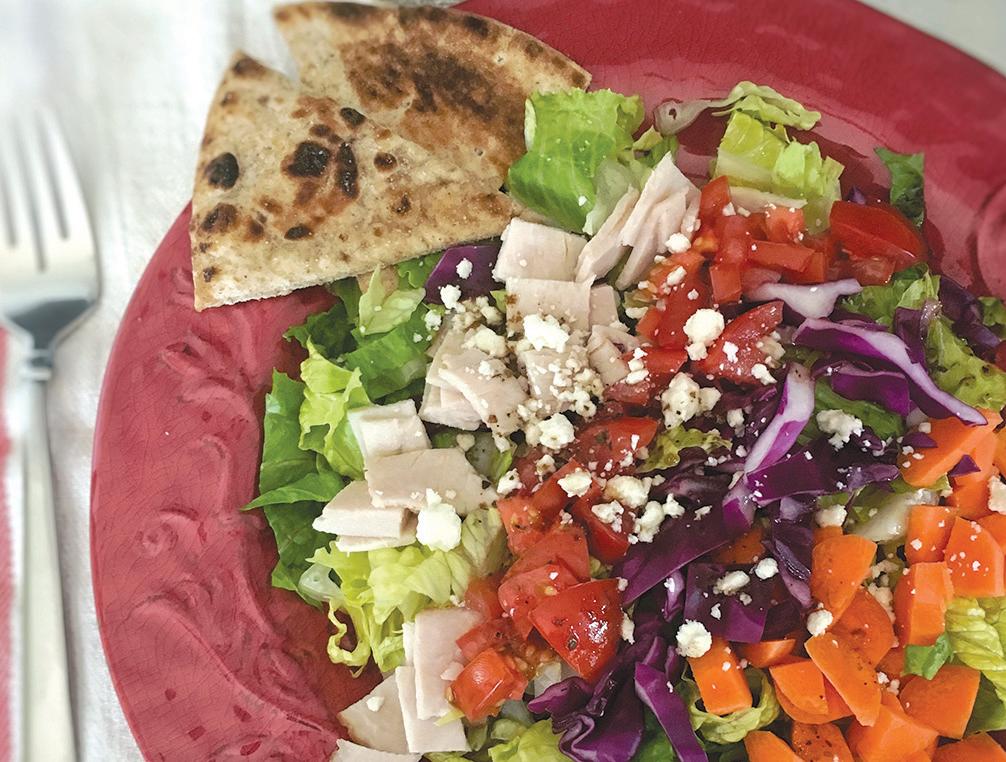
This salad is delicious, beautiful and refreshing, the perfect thing to eat when the heat index is in triple digits — which, unfortunately, will be here before we know it.
Ingredients
• 8 cups chopped Romaine lettuce
• 1 cup finely chopped red cabbage
• 1 cup finely chopped carrots
• 1 cup finely chopped seeded cucumber
• 1 cup finely chopped tomato
• 8 ounces low sodium deli turkey sliced ¼- inch thick and chopped
• ½ cup feta cheese crumbles
• 6 tablespoon Light Balsamic Vinaigrette
Directions Wash and thoroughly dry the lettuce. Chop into small bite size pieces and place on a platter. Place the remaining ingredients (except for feta and dressing) over the lettuce in rows. Sprinkle with feta and drizzle with dressing or serve dressing on the side.
Yield: 4 servings
Nutrition Breakdown: Calories 160, Fat 5g (2.5g saturated fat), Cholesterol 35mg, Sodium 700mg, Carbohydrate 17g, Fiber 5g, Protein 19g, Potassium 650mg, Phosphorus 135mg.
Percent Daily Value: 270%
Vitamin A, 50% Vitamin C, 10% Iron, 10% Calcium
Carbohydrate Choice: 1 Carbohydrate
Diabetes Exchange Values: 3 Vegetables, 2 Lean Meats, 1 Fat





5 WAYS TO PAY THE RIGHT PRICE FOR
by Ken Wilson Steppingstones to RecoveryIn the early 1700s, young Benjamin Franklin saw a street vendor selling whistles and Ben just had to have one! He paid the price the salesman asked for –around a nickel – and was happy as can be until he saw someone else around the next corner selling an identical whistle for two cents! He used the lesson he learned a number of times during his life, and a hundred years later an artist named George Harvey made the story famous by preserving the incident on a canvas entitled “He Paid Too Much For His Whistle.”
In this series on how to choose a good treatment center, it’s easy to pay too much for the whistle! In the January issue of this column I outlined the many levels of care involved in treatment of substance use disorders. Unfortunately,


each and every level is often misunderstood as meaning “treatment.” But once you know which level of care your loved one needs, how do you go about finding a facility to enroll in?
First, immediately dispel the myth that the more you pay for treatment the better it is. I know of reliable and effective detox facilities that are state sponsored and will do the job for you at no charge if you meet admission criteria and there’s one right here in Augusta (Serenity Behavioral Health Crisis Stabilization Unit). It does the same job as facilities that charge $1,000 to $2,000 per day for a week or more of treatment. So there are state licensed treatment programs that will treat substance abuse disorders for no charge, and there are those that charge $30,000+ for a month or more.
Second, it’s important to realize that the length of time in treatment is more
important than intensity of treatment. That has been proven by research. To travel the full spectrum of detox, inpatient treatment, intensive outpatient treatment, then to a sober living facility over the course of a full year is far more effective than completing a monthlong program and returning to life as usual. So when looking for help, try to find a center that has all these levels of care (rare) or seek one with a good referral network which can help you make seamless transitions to the next level.
Third, look for a program that includes family and close friends. Many times the family needs help as much as the patient! I have often said, “the wrong person is in treatment here! The client needs to go home and have the family enroll in treatment!” Family and friends are the ones who lose sleep over the actions of another, often far more
THE THRILL IS GONE

than the addict/alcoholic themselves. There is no substitute for the support of friends and family in recovery. Family programs help teach what is support and what is not. In a strong wind it is easier for the newbie in recovery to stay standing with arms linked with family and friends in the triangle than trying to stay standing alone.
Fourth, don’t depend solely on internet reviews. I read an article this week from a legitimate source that cited studies which found that around half the reviews of some sites and programs were engineered by ... whoever. They are certainly worth looking at, although the best review is from someone you know who completed program X. I’ve bought to-be-assembled furniture online before after reading the reviews, and looking back I wonder if we were referencing the same product! LOL!

Fifth, go visit programs you are considering. I mean, we buy cars that way! We need to know how it fits, drives, feels, and sounds. You’re a smart person to have come this far already in finding your loved one a superb program, and you’ll have an even better sense of the place after experiencing its energy field first-hand. Given the same specs, a whistle is a whistle. Spend a quarter or spend a dollar. You choose.





ASK YOUR DOCTOR from page 1
US population (but causing far less harm than diabetes).
But some of these conditions (which are frequent DTC targets) are much less common
• 0.1-0.2% of the US populace has psoriatic arthritis
• 0.25-1% have rheumatoid arthritis
• Ulcerative colitis affects 35-100 people per 100,000.
• Crohn’s disease affects 100-300 per 100,000.
Lest we forget, these ads are all for prescription drugs, meaning that the vast majority of people who see the ads cannot actually get the product without significant help. In case you missed it, it takes a doctor to prescribe these drugs.
So these ads target a very small percentage of the US population. How small? Here are the numbers:
There are 332 million people in the US. The number of practicing doctors is just under 1 million (about 0.3% of the population)
But this constitutes all doctors, which is not accurate. Your psychiatrist or pediatrician can’t prescribe medications for your Crohn’s disease, psoriasis, or breast cancer. So if we look just at those doctors who do prescribe for these conditions. There are:
• 12,116 Dermatologists (0.004% of the population)
• 6,265 Rheumatologists (0.002%)
• 16,274 Hematologist/Oncologists (0.005%)
• 15,469 Gastroenterologists (0.005%)
So why are drug companies spending billions to promote a drug that treats a tiny percentage of the population and is prescribed by an even tinier fraction of people in the US?
Obviously, the answer is money. Lots and lots of money.
The average end-user cost of new drugs released in 2022 was a whopping $20,000 per year. New chemotherapy drug costs dwarf that, coming in at $15,000 per month ($180,00 per year). Revenue for individual pharmaceutical companies in 2022 ranged from $10 billion to more than $100 billion (the winner being Pfizer, which profited greatly off of their vaccine for
COVID).
Wait a minute.
How can a company charge prices that nobody but the ultra-wealthy can afford?
That would be like a grocery store charging $100 for a can of soup or $1000 for a steak. Who would go there? Who could afford it? And this is the situation in our glorious healthcare system: we have a product that is so expensive that nobody can afford to get sick
Of course, nobody actually pays $15,000 a month for their drugs. They just run it through their insurance and, like magic, the price is cut to something much more affordable. But while insurance companies do get special discounts from the pharmaceutical companies, they are still paying huge prices for the drugs (as witnessed by pharmaceutical company profits). And if only a small segment of people need the drug, insurers can spread the cost out to all of their policy holders and dilute the expense. But drug costs are still very high, accounting for 18% of all healthcare costs between 2016 and 2021. Just 1% of the most expensive drugs account for more than 10% of all drug costs. Doesn’t this hurt the insurance companies and reduce their profits? Of course not! They just raise their premiums and pass the cost back to the consumer.
Yes, our system is very sick. But that’s for another article.
Back to the subject of this article, direct-to-consumer (DTC) pharmaceutical ads, the U.S. is one of only two countries in the world (the other being New Zealand) that allow marketing of drugs directly to consumers. This started in the 80s when a drug company wanted to pitch their version of ibuprofen against the popular drug Motrin. They made an ad that simply stated that their drug was identical to Motrin, only cheaper. The drug (Rufen) was successful in bypassing the rules of the FDA to make it to the small screen, but not as successful at bringing down the Motrin empire.
But that ad opened the floodgates and DTC pharmaceutical ads became a ubiquitous part of television
viewing and part of our culture. Prior to this, drugs were marketed only to doctors, either in medical journals or via in-person visits by drug reps. This was the glory days for drug reps, when every doctor’s office was overflowing with pens, note pads, and a myriad of other paraphernalia bearing the name of the latest and greatest antibiotic, blood pressure medicine, or antidepressant. Those trinkets (as well as other, not-so-ethical forms of marketing) were outlawed in 2009, so the glory pen days are a thing of the past. Marketing to doctors still continues at a high rate, but the rules around what can be said about a drug are very stringent. No claims can be made that are not approved by the FDA, and drug companies have to explain the risks and possible side effects of their products to doctors in detail.
This full disclosure rule spilled over to the DTC ads for drugs, resulting in the laundry-list of possible side effects at the end of (or throughout) every commercial. Companies are not allowed to make positive claims without explaining the risk. So is there a benefit to DTC ads? There is. I’ve had patients get vaccinated for shingles because of the latest ad campaign. There have also been times when an ad piqued my interest and motivated me to read up on a new drug for a disease I treat (or for no other reason than to have answers for the questions I will undoubtedly get from my patients).
But there is a darker side to this, with DTC ads clearly shown to increase the cost of drugs, since patients actually prefer newer “name brand” drugs, even though they may be more expensive than older, proven drugs that come at a fraction of the cost. Ironically, the high profitability of certain drugs has made it far less likely that new antibiotics or blood pressure medications will be developed. In the same way that Rolls-Royce won’t be offering a Yugo-type car anytime soon, the lure of massive profits from the super-high-cost specialty drugs (thanks largely to DTC marketing) is too appealing to launch low-profit additions to
a drug company portfolio.
Still, it’s hard to pin the high cost of prescription drugs solely on DTC marketing. It’s only a small part of the equation when compared to the profit-driven, stockholder appeasing mindsets of the pharmaceutical and insurance industries. While
banning DTC ads (as suggested by the American Medical Association) would be met with rejoicing from many, it would not fix the root problems that are burying Americans in medical debt.
Maybe you should ask your doctor if moving to Canada may be right for you.

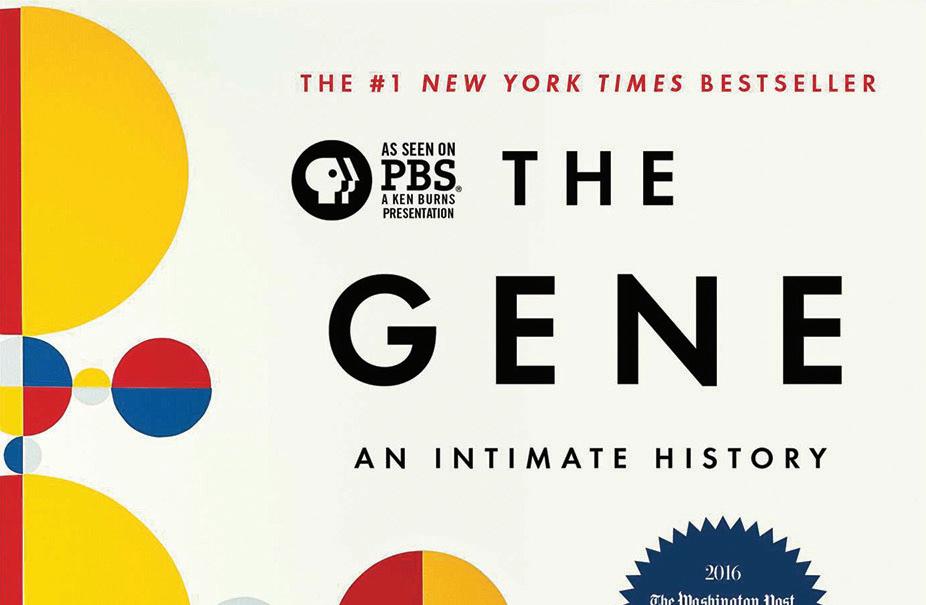


CRASH COURSE

Anyone who spends any time on the road in the “CSRA area” (we know, we know) — or any other area in the US of A where there are roads and cars on those roads — has seen plenty of dumb driving.
What is remarkable about dumb driving is that the drivers themselves are probably not dumb. It’s their driving that’s dumb. Like we’ve seen some real boneheaded stunts by drivers with cars that have special “Educator” license plates. These are accomplished college graduates, but teaching math and driving seem to be two completely different skill sets.
What are some examples of dumb driving? How much time have you got?
guilty when it comes to running reds as they follow the lead red-runner through the intersection.
DUMB DRIVING
What is really dumb — and it has only been a couple of days since we saw this most recently — is when someone pulls into the intersection and never gets an opening in upcoming traffic that would allow a safe left. So they back up to clear the intersection. Usually someone is right behind them, so backing up doesn’t work (as it shouldn’t!) but by the time the driver realizes he’s stranded in mid-intersection, cross traffic is already streaming through.
SHORTSTORIES
THE PATIENT I ABSOLUTELY HATED It isn’t necessarily rare to dislike a patient, but one in particular comes to mind. (Minor identifying features have been changed to protect patient confidentiality.)
A young mother in her early 20s broke up with her abusive boyfriend. A week later he ambushed her on her front porch, stabbing her more than 30 times before stabbing himself once in the stomach. She coded shortly after arrival to the trauma bay but we were able to get her back. She had been stabbed so many times in the neck alone that the ragged end of her esophagus was dangling out. We rushed her to the OR and she ultimately survived and went home, but that is a story for another day.
Shortly after she came in, her ex-boyfriend arrived. His injury was not immediately life threatening but did require an operation, so after stabilizing her, I took him to the OR too, where he got a relatively minor operation. He remained in the hospital for several days after, however, because he was on suicide watch. So I rounded on him every day as I would any other patient, did wound care and other standard post-op care. He was polite, said “thank you, ma’am,” and we never discussed his ex-girlfriend or the circumstances that brought him to the hospital.
Does that mean I liked him? Oh, hell no. I thought he was the scum of the earth. I found myself thinking he should have stabbed himself as many times as he stabbed her. Better yet, just stab himself and leave her the hell alone. Oh, I despised him to the core.
Let’s start with two opposing schools of thought that are in regular evidence at traffic lights. Let’s say there are three lanes, two going straight and one designated for left turns. The red light ends and two greens appear for people going straight, along with a flashing yellow arrow for the left turn lane.
One school of left turn thought is not to pull forward into the intersection unless you can see a gap in oncoming traffic that will allow you to complete the left turn.
The other school of thought is to pull forward so that if and when a gap does appear the turn can be completed more safely.
For the record, easing into the intersection is 100% legal. At least it was the last time we asked law enforcement (Sheriff Clay Whittle: if you’re reading this and anything has changed, let us know).
Here are the dumb (and even dumber) ways the two schools of thought play out. When traffic is heavy (like most of the time), the don’tpull-forward crowd can sit through three lights without moving. Or they sit through one entire green, and once the light goes red, that’s when they turn. And invariably two or three people follow them through, all on the red light. Running reds is epidemic behavior around here.
For their part, the pull forwarders are just as
Here’s the antidote to both groups: pull into the intersection on a green or a flashing arrow while awaiting a safe opportunity to turn. You’re in a much better position to assess the opening in oncoming traffic and safely complete the turn when you have pulled forward. If no safe opportunity materializes and the yellow and/or red light comes on, wait until all the oncoming redlight runners have passed through (there will be several), then complete your turn. Do not enter the intersection after the green goes to yellow or red to follow another vehicle through. Do not
Want to quickly touch on another element of dumb driving? It’s the habit some people have of monopolizing the left lane. Some of these drivers view the left lane as their personal drag strip, while others just poke along below the speed limit like they’re out for a Sunday drive, oblivious to the traffic stacking up behind them. Both groups are dumb. The difference is that the slowpokes don’t seem to realize they’re doing anything wrong, but the speed demons do.
Want proof?
Just drive exactly like a left-lane monopolizer. Nothing infuriates them more than encountering someone who drives just like they do. They can see that it obstructs traffic flow when anyone else does it, but they are blind to the same effect when they do it, and to show their annoyance they will recklessly whip around anyone who stays in the left lane — and then they will proceed to, you guessed it, stay in the left lane.
MEDICALEXAMINER
OUR GUARANTEE
And so did one of my med students. After the 3rd or 4th day rounding on him, she couldn’t take it anymore.
”How can you be so nice to him after what he did? He’s a horrible human being! He deserves to die!” she burst out.
”Maybe,” I replied. “But there are agents of justice and agents of mercy in the world, and we need both. As a doctor I am an agent of mercy. My job is to care for my patients and trust that the agents of justice will do their job just as well. Which I do.”
SHORTSTORIES
THE COLONOSCOPY I REALLY DIDN’T NEED I had no symptoms of any intestinal problem, but the PA doing my annual physical sweet-talked me into a colonoscopy. On the assigned day I went through the prep and into the exam room, fully aware that this was just a case of reassuring everyone that all was well and all boxes had been checked on my physical.
Twenty minutes later (very fast in a colonoscopy), I was in recovery with my gastroenterologist telling me I had a total blockage. She was wrong. It ended up being two tumors, one on top of the colon wall and the other on the lower part that she looked at incorrectly; but still the discovery was the key no matter what it was.
I met with the surgeon and heard all the possible outcomes of surgery (which were not making me feel warm and happy about my future), then I had surgery to remove two malignant tumors and multiple lymph nodes. Cancer cells were found in a lymph node, and my cancer was classed as Stage III A. Chemotherapy for six months wasn’t fun, especially when I had a reaction to one of the drugs and ended up in the hospital for a week.
Even so, this completely unnecessary procedure has given me a chance to travel multiple times over Western Europe, the British Isles and Ireland, plus Alaska once and Hawaii twice. I have had a wonderful six and a half years since that needless colonoscopy. +
the blog spot
— posted by Jennifer Gauntt, MD, on 3/5/2023 (edited for space)EAT LESS & MOVE MORE? NO. WHAT MY THIN COLLEAGUES NEED TO KNOW
I have been overweight or obese since I hit puberty. I have gained and lost the same 60 pounds half a dozen times in my adult life. I’ve never been one to try a fad diet – I research the data and follow a scientifically sound plan. The only way to lose a pound is to have a 3,500-calorie deficit. Losing weight is actually quite simple. But it isn’t easy.
I recently started taking a GLP-1 receptor agonist (think Mounjaro, Ozempic, Wegovy), a weekly subcutaneous injection that has gained media notoriety due to many celebrities and “influencers” who have lost significant body weight on these medications. For weight loss, the major mechanisms of action are to increase insulin sensitivity (great for those with insulin resistance or type 2 diabetes) and delay gastric emptying (to make you feel full sooner and longer). But another effect of the GLP-1 medication has me convinced we’ve been thinking about obesity the wrong way for years. The biological driver of obesity has been overlooked. I didn’t know about this for my entire adult life, not until the driver was gone, effectively nonexistent on the GLP-1.
I call it “brain chatter,” but other GLP-1 users describe it as “food noise.” I now recognize that the nearly constant chatter about food, the internal dialogue of “what does it matter if I eat this now, I’m never going to be able to lose this weight,” the struggle to not eat that after dinner snack, only to think about the snack nonstop until I finally give in is a major factor in my obesity. The chatter is so loud I now understand how I’ve never been able to sustain weight loss. Sure, I could willpower my way down 60 pounds; I am a type A personality physician who has always accomplished her goals. But willpower is an exhaustible resource, and the weight easily comes back once exhausted. Every time. Now that the desire for food has eased and the brain chatter is gone, I understand: This is how naturally thin people go about their lives! They eat to live as opposed to live to eat. They eat when they are hungry and stop when they are full. They don’t have a brain-chatter devil on their shoulder sabotaging them left and right. And now that I’ve experienced life without brain chatter, I will never go back. (Brain chatter explains why many people who have had weight loss surgery regain weight. It’s not just about making the stomach smaller so less food will fit in there. Anyone with unregulated brain chatter can overeat their way right through a small stomach.)
Evidence shows that up to 95 percent of people who lose weight regain it within a few years. Evidence would probably also show that many Americans (maybe even 100 percent) who stop their blood pressure medication will fail to maintain blood pressure control. But we haven’t done that study because the medical community recognizes hypertension as a chronic disease needing lifelong therapy (barring extreme circumstances). The medical community needs to recognize that obesity is also a chronic disease. This is not a laziness problem. This is not purely an overeating problem. It is far more complex.
Those who have used anti-obesity medications to lose weight have no other options. I will not stop taking a GLP-1 medication when I reach a healthy weight because I finally understand what I’ve been missing my entire adult life – a life free of brain chatter. Let’s treat obesity like the chronic disease it is. Let’s stop telling people with obesity to “eat less and move more.” There is a lot more to achieving and maintaining a healthy weight than that.
Jennifer Gauntt is a pediatric critical care physician
From the Bookshelf
What follows is from a Kirkus Reviews overview of The Gene by Siddhartha Mukherjee:
A panoramic history of the gene and how genetics “resonate[s] far beyond the realms of science.”
Mukherjee (Medicine/ Columbia Univ.; The Laws of Medicine, 2015, etc.), who won the Pulitzer Prize for his history of cancer, The Emperor of All Maladies (2010), begins with Mendel and his “pea-flower garden,” and he never lets readers forget the social, cultural, and ethical implications of genetics research. Indeed, he dedicates the book to his grandmother, who raised two mentally ill children, and to Carrie Buck, the Virginia woman judged “feeble-minded” and sterilized according to eugenics laws passed in the 1920s. After Mendel, Mukherjee describes Thomas Morgan’s fruit fly studies in the 1900s, and he goes on to trace the steps leading to the discovery of the double helix, the deciphering of
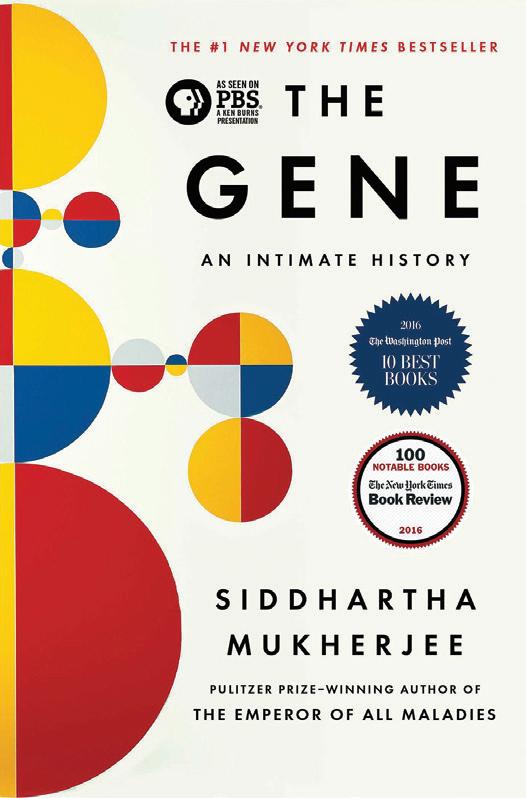
the genetic code, and the technological advances that have created ethical dilemmas. Early on, there was recombinant DNA, the insertion of genes from one species into another, and this led to mandates initially proscribing certain experiments. Then, there were the first disastrous attempts at gene therapy, which consisted of arrogant and sloppy science. Meanwhile, the human genome has been mapped, more and more genes have been associated with certain diseases (and even behaviors), and a

new technique has been developed that permits the removing or replacing of specific genetic defects. Are we ready to apply that to an individual patient? Should it apply to sperm and egg cells so as to affect future generations? Mukherjee ponders these issues in the final chapters and epilogue, ultimately seeing the need for more research about the information coded in the human genome, since so much of it does not consist of genes. Throughout, the author provides vivid portraits of the principal players and enough accessible scientific information to bring general readers into the process of genetic lab science.
Sobering, humbling, and extraordinarily rich reading from a wise and gifted writer who sees how far we have come—but how much farther we have to go to understand our human nature and destiny.
The Gene by Siddhartha Mukherjee, M.D; 608 pages, published in May 2016 by Random House. +
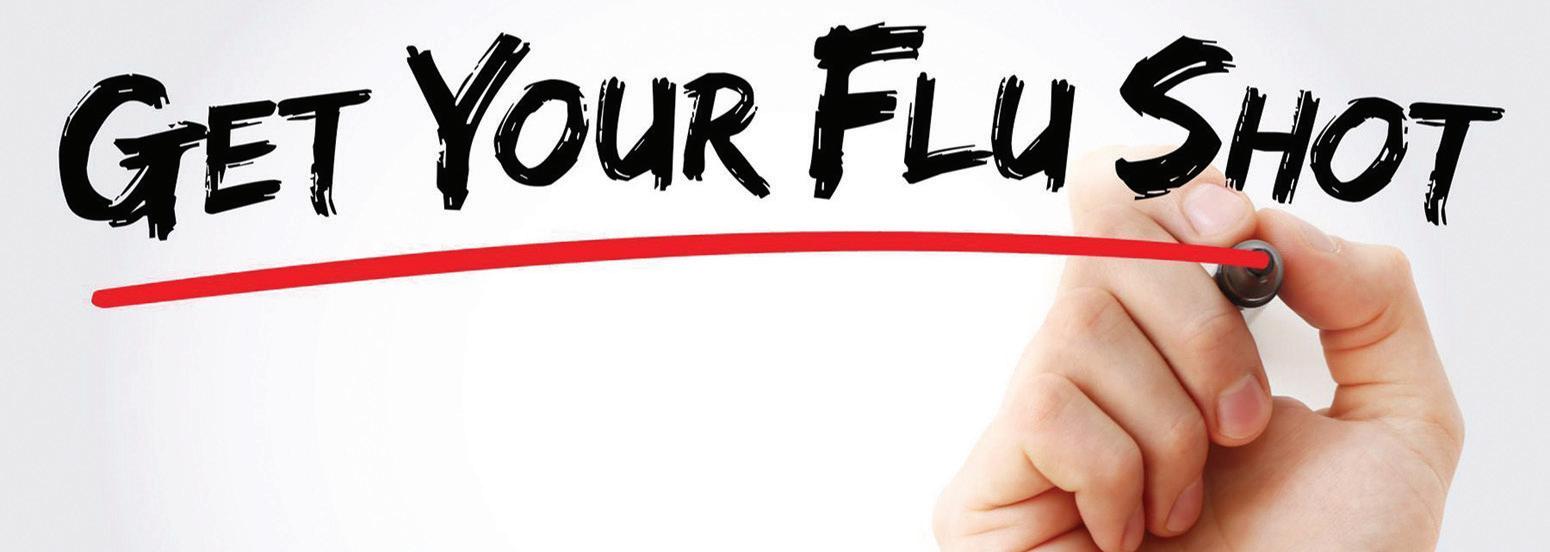











ACROSS
1. _____ Gordon
6. Around prefix
10. Within prefix
14. Slow (in music)
15. Sign on many doors
16. Low in fat
17. ____ Flu
18. Infant mort. cause
19. It can be posted or jumped
20. Paine’s _______-Lambuth chapel
22. Post-mortem
24. ____ up, as with bread
25. Brag; boast
26. Of black & white ancestry (obsolete; offensive)
30. Small ball holder
31. Curved bone
34. One and all
36. Just an ordinary Joe
38. Sci-fi classic
39. Cinemas owner
42. Kelly of TV
43. Greek epic poem
45. Short joke
47. Loo in America
48. Doctrine suffix
51. Single-celled adjective
52. Rectangular pier
53. Constrictor beginning
54. Telfair St museum name
57. Continuing
62. Parched
63. ______ history
65. Stomach woe
66. Stead
67. Flightless bird
68. Fragrant resin
69. Took a tumble
70. Management person (in short)
71. Radioactive gas, element no. 86
by Dan Pearson

THE MYSTERY WORD
The Mystery Word for this issue: TURBOKEA
Simply unscramble the letters, then begin exploring our ads When you find the correctly spelled word HIDDEN in one of our ads — enter at AugustaRx.com
We’ll announce the winner in our next issue!
X A M I N E R S U D O K U
DIRECTIONS: Every line, vertical and horizontal, and all nine 9-square boxes must each contain the numbers 1 though 9. Solution on page 14.
DOWN
1. Common type of stone
2. Son of Jacob and Leah
3. Indigo dye
4. Attempt
5. Integrity
6. Defer; delay
7. Upon or above prefix
8. Edit or censor, as a legal document
9. Cover with Nationwide
10. Type of grease
11. Low tide
12. Raised platform 13. Solely 21. Rotating member
23. Lower digits
26. Corpsman
27. The throat’s “little grape” (Latin)
28. Russian premier 1917-1924
29. Part of CSRA
31. Nose prefix
32. Louvre Pyramid architect
33. Type of certification
35. Self-esteem
37. Child’s bed
40. Steroids starter
41. Yellow citrus fruit
44. Take dinner
46. Word often following little and big
49. TIA as it’s more commonly known
50. Reeves movie
52. Arabic word meaning slave or servant
54. One of two equal parts
55. Great lake
56. Monetary unit of Cambodia
58. Earthen pot
59. Like most tea
60. Jules Verne captain
61. Smile
64. Reverence; admiration

DIRECTIONS: Recreate a timeless nugget of wisdom by using the letters in each vertical column to fill the boxes above them. Once any letter is used, cross it out in the lower half of the puzzle. Letters may be used only once. Black squares indicate spaces between words, and words may extend onto a second line.
Solution on page 14.
Use the letters provided at bottom to create words to solve the puzzle above. All the listed letters following #1 are the first letters of the various words; the letters following #2 are the second letters of each word, and so on. Try solving words with letter clues or numbers with minimal choices listed. A sample is shown. Solution on page 14.

Ablonde is on a blind date.
THEBESTMEDICINE

Moe: Pretty good. I put her in a chair in the other room and made her sit there for two hours.
A policeman patrolling a St. Patrick’s Day parade caught an unmistakable whiff of weed and soon identified its source. He searched the man’s pockets and sure enough found a bag of weed.
“What have we here?” asked the officer.
“It’s not mine, I swear.”
“It’s very nice to meet you” she says to her date as they seat themselves in a booth at a nice restaurant.
“So tell me about yourself,” she begins. “What do you do for work?”
“Well, I’m an optometrist” he replies.
“I think we’re going to get along just fine,” she says with a big smile. “I’m a glass-half-full girl myself.”
An immigrant from a third world country finally makes it to the United States and on his second day here someone sticks a gun in his face and says, “Give me all your money and I’ll let you live.”
The man breaks out in a huge smile and says, “You must be a doctor!”
Police Officer: Whose car is this, where are you going, and what do you do for a living?
Miner: Mine.
Moe: My wife got a little frisky last night. She wanted to play doctor.
Joe: How’d that go?
Why
subscribe to the
“Do you really expect me to believe that?” asks the cop. “That’s what everyone says.”
“I’m serious!” the man says. “A leprechaun put a spell on me. I can’t get rid of this stuff! Every time I flush it down the toilet it instantly reappears in my pocket.”
“That is ridiculous,” the officer says.
“Try me!” the man says. “You’ll see!”
The cop frowns but follows the man to the bathroom of a nearby cafe. The man takes the weed and flushes it down the toilet, and the officer checks his pockets. There is no weed.
“Thank you officer!” gushes the man as he hugs the policeman. “You broke the spell!”
Moe: I was reading that the word “snake” has been changed to “essential.”
Joe: Well no wonder people are buying the oils again.
Moe: I know a guy who makes a million dollars a day, yet he eats a baloney sandwich for lunch every day and drives a 15-year-old car.
Joe: Wow. Where does he work?
Moe: He’s a printer at the US Mint.
MEDICALEXAMINER?
Staring at my phone all day has certainly had no Effect on ME!
Because try as they might, no one can stare at their phone all day.

By popular demand we’re making at-cost subscriptions available for the convenience of our readers. If you live beyond the Aiken-Augusta area, or miss issues between doctor’s appointments — don’t you hate it when that happens? — we’ll command your mail carrier to bring every issue to your house!
NAME ADDRESS
CITY STATE ZIP
Choose six months for $22 or one year for $40 . Mail this completed form with payment to Augusta Medical Examiner, PO Box 397, Augusta GA 30903- 0397
Dear Advice Doctor,
The Advice Doctor


Two years ago I made one of the biggest mistakes of my life by going into business with my best friend. We are each 50% owners of the company that was going to make us both, if not wealthy, at least very comfortable. Instead the company has limped along, draining us mentally and financially. We have completely different ideas about how to fix this mess, and we’re both very stubborn. This battle of wills shows no signs of ending happily. Any suggestions to break the stalemate would be welcomed.
— Stuck in the Mud
Dear Stuck,
Thank you so much for writing about this important issue in your life. I’m honored to be entrusted to offer some advice.
Far more people than you might realize are in the same situation you are, and entire families are often broken to pieces when battles over wills erupt. It would be very sad to hear the stories funeral directors could tell about the vicious verbal and physical fights they have seen between supposed loved ones.
One of the most common misconceptions that attorneys and estate planners see are people who don’t have a will for one or both of two reasons: 1.) they’re young and healthy and nowhere near death and 2.) they have very few assets; they view themselves as poor.
Not only is life (and its inevitable end) unpredictable, but most people in the two situations above have more than they realize: a husband or wife, children, a car or two, furniture, and whatever is in their savings or checking accounts.
Let’s say a young parent (maybe a single parent) dies. Who will raise the children? Most people would not want to leave something that important to chance. What if the death was caused by an accident at work or on the roadways and as a result there was a huge settlement? A will can direct that any and all assets be dispersed exactly as you would want them to be even when you aren’t around to see to it personally.
While it may be true that the surviving spouse usually inherits everything, that isn’t always the case. A will can spell everything out exactly, including things you might not want your spouse to inherit for one reason or another.
None of us want to think about the inevitability of death, but despite that, planning for it is the wise course.
Thanks again for writing. I hope I answered your question.
Do you have a question for The Advice Doctor about health, life, love, personal relationships, career, raising children, or any other important topic? Send it to News@AugustaRx.com. Replies will be provided only in the Examiner.


THE MYSTERY SOLVED
...cleverly hidden on the house in the p. 5 ad for OVERHEAD DOOR OF AUGUSTA/AIKEN
THE WINNER: MARY GRACE SMITH!
If that’s your name, congratulations! Send us your mailing address using the email address in the box on page 3. The new Mystery Word is on page 12. Start looking!
The Celebrated MYSTERY WORD CONTEST
...wherein we hide (with fiendish cleverness) a simple word. All you have to do is unscramble the word (found on page 12), then find it concealed within one of our ads. Click in to the contest link at www.AugustaRx.com and enter. If we pick you in our random drawing of correct entries, you’ll score our goodie package!
SEVEN SIMPLE RULES: 1. Unscramble and find the designated word hidden within one of the ads in this issue. 2. Visit the Reader Contests page at www.AugustaRx.com. 3. Tell us what you found and where you found it. 4. If you’re right and you’re the one we pick at random, you win. (Winners within the past six months are ineligible.) 5. Prizes awarded to winners may vary from issue to issue. Limited sizes are available for shirt prize. 6. A photo ID may be required to claim some prizes. 7. Other entrants may win a lesser prize at the sole discretion of the publisher. 8. Deadline to enter is shown on page 12.

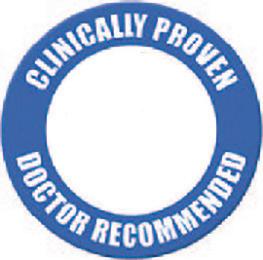

PROFESSIONAL DIRECTORY
ACUPUNCTURE
DERMATOLOGY

Evans Chiropractic Health Center
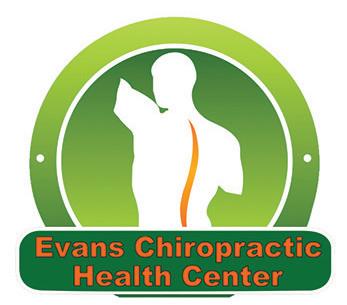
William M. Rice 108 SRP Drive, Suite A 706-860-4001 www.evanschiro.net

Dr. Eric Sherrell, DACM, LAC Augusta Acupuncture Clinic 4141 Columbia Road 706-888-0707 www.AcuClinicGA.com 3633 Wheeler Rd, Suite 365 Augusta 30909 706-432-6866 www.visitrcp.com



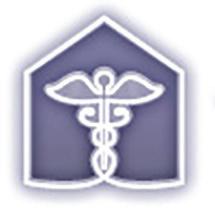



Jason H. Lee, DMD 116 Davis Road Augusta 30907 706-860-4048

803-279-7450 www.parkspharmacy.com


Steven L. Wilson, DMD Family Dentistry 4059 Columbia Road Martinez 30907 706-863-9445 Floss ‘em or lose ‘em!
READERS
As you probably know, the Medical Examiner is normally published twice a month with an issue date of every 1st and 3rd Friday. Once in a while something interferes with that routine, like a certain golf tournament, for instance. Instead of publishing an issue dated April 7 (during tournament week), we’ll take advantage of this month’s five Fridays and do that issue on March 31. We’ll all pretend that’s our 1st Friday edition, then resume the normal schedule on the next issue, April 21, April’s 3rd Friday. Mark your calendars today!
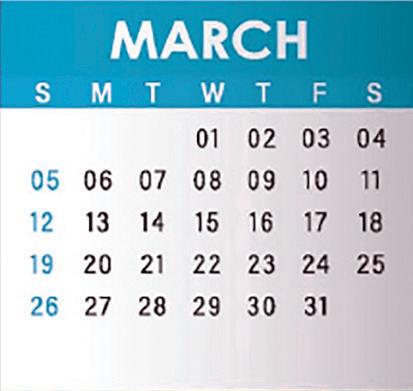





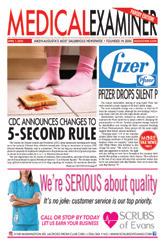
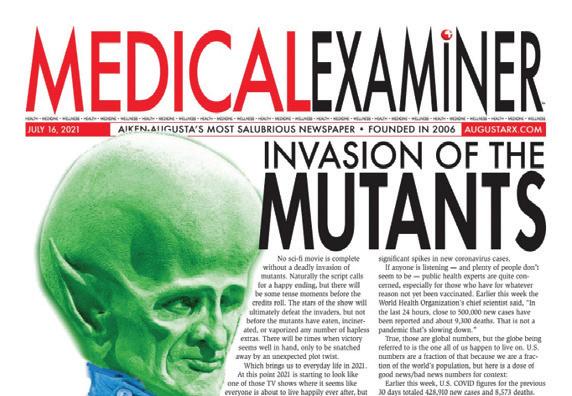




AIYAN DIABETES CENTER

ENDOCRINOLOGY
Khalil Al Soutary, MD Endocrinology


Jamie Steinsapir, MD, PhD Endocrinology
OPHTHALMOLOGY
Julian Nussbaum, MD Ophthalmology
Janaki Nadarajah, DPM Podiatry PODIATRY, WOUND CARE


Kaushal J. Shah, MD Vascular Surgery


